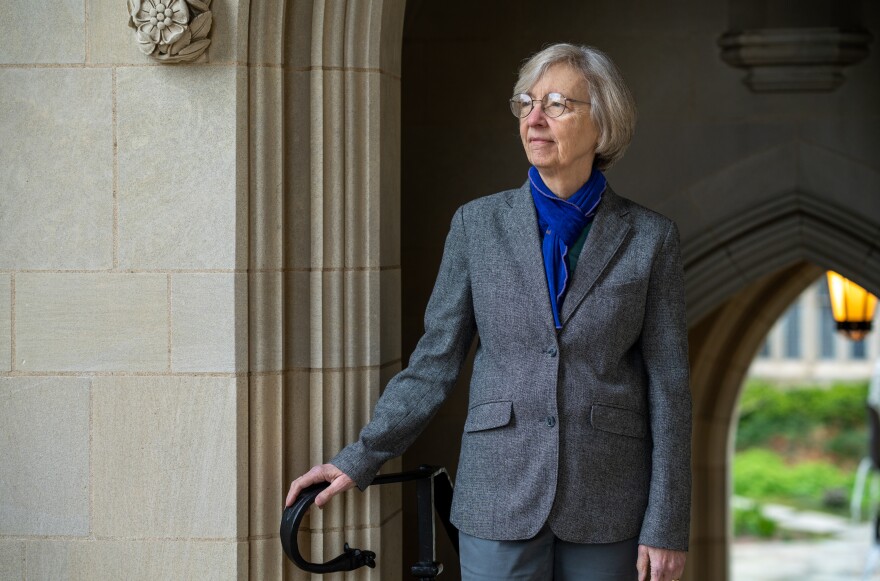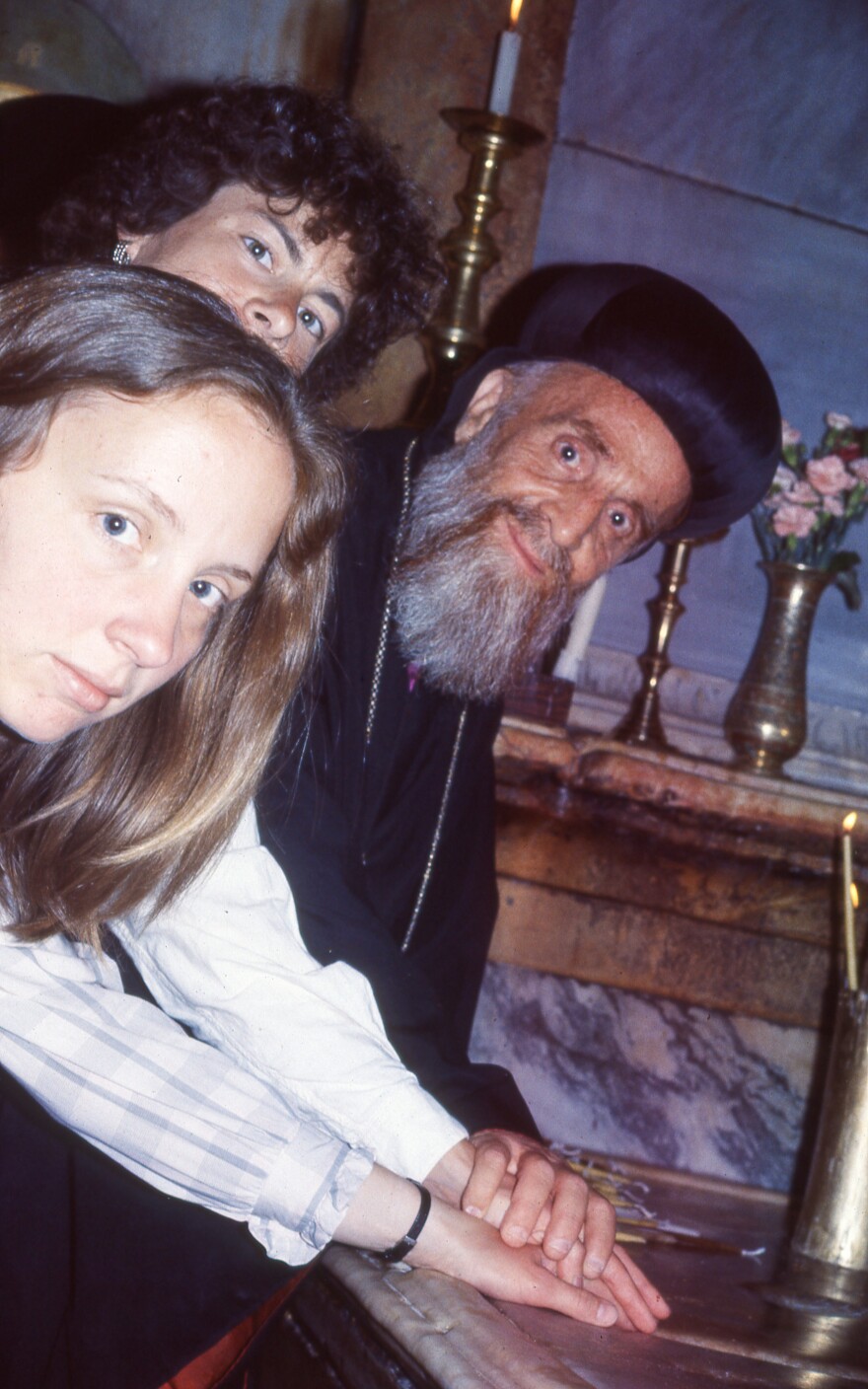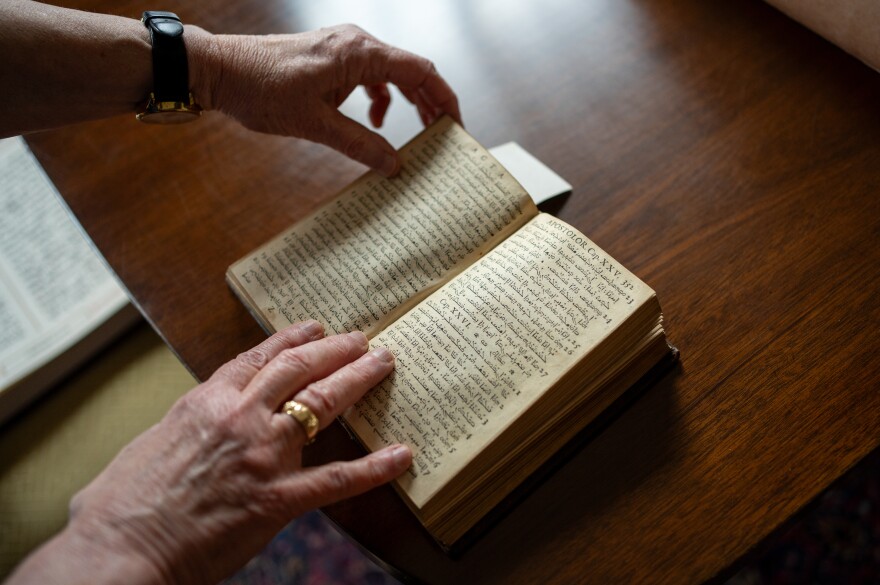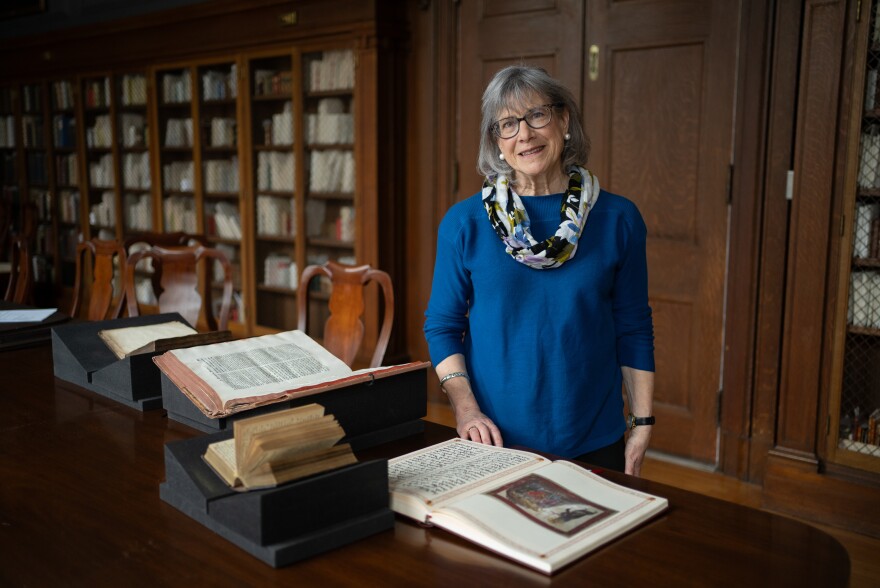The Science of Siblings is a new series exploring the ways our siblings can influence us, from our money and our mental health all the way down to our very molecules. We'll be sharing these stories over the next several weeks.
The first time Susan Ashbrook Harvey and Robin Darling Young traveled together in the Middle East, they got very close very quickly. It was 1985, and the two scholars were crammed into a tiny van with several others bound for Tur Abdin, a hilly region in southeast Turkey filled with holy sites.
"We had squeezed ourselves into a dolmish — a van — that was literally full of people. If you know dolmatas [a Greek dish of rice packed tightly into grape leaves], it's the same word," Darling Young says. "We rode down with everybody and her chicken."
On paper, the two scholars had a lot in common when they met decades ago. They both studied the ancient traditions of Syriac Orthodox Christianity. Both were women in their mid-30s in a male-dominated field. But until their trip, they'd really only crossed paths at conferences.
So when they decided to travel for three weeks together, to see with their own eyes the holy places they'd only read about on the page — it was a leap of faith.
"Robin called me up one day and said, 'Let's go to visit the Syriac East,'" Harvey recalls. "It was kind of risky to do this kind of trip together, because there was no escape."

The two women dove into the adventure. They hitchhiked through the countryside and attended worship services in church communities and villages. When the day was over, they'd sleep in sparse, shared pilgrims' quarters in monasteries, where monks would sing hymns at night.
That intense experience of travel and research tested them — and bonded them.
Three weeks later, when they reached Jerusalem, they had become so close that Mor Dionysius Behnan Jajjawi, then the Archbishop of the Syriac Orthodox Church in Jerusalem and the Holy Land, noticed the special quality of their friendship.
After welcoming them as pilgrims and guests, and giving them a personal tour of the city's Syrian churches, he observed that "we had a friendship that was based on something deeper than blood, because our relationship was based on something bigger and greater than ourselves," Harvey says.
When they came to the Church of the Holy Sepulchre — which many Christians consider the holiest place in the world, thought to be the site where Jesus was crucified — Archbishop Jajjawi asked: "Would you like to come to the liturgy, after which we will perform an ancient ritual?" Darling Young recalls.
The ritual he had in mind would join these friends as sisters, in a traditional ceremony that dates back thousands of years.
A practice that dates back to 4th-century monks

The practice, called "adelphopoiesis," means "brother-making" in Greek and is thought to have originated among monks, says Claudia Rapp, a Byzantine scholar at the University of Vienna and author of the book Brother-Making in Late Antiquity and Byzantium.
"The earliest inklings we find are for these kinds of prayers to be performed between two people who are on the same spiritual journey," Rapp says. Historical records show that sworn brothers would then be obliged to pray for each other and would sometimes be buried in the same tomb.
Evidence for this practice between monks dates back to between 4th- and 7th-century ancient Egypt, Rapp says. By the ninth century, the practice spread. "Laypeople adopt[ed] the practice for themselves, in order to either cement friendships or to neutralize enemies — and generally to extend their families so that they can have a wider social network within which to operate," Rapp says.

While some scholars have presented these ceremonies as early forms of same-sex romantic marriage, Rapp says the evidence does not fully support this interpretation. "[While] some people [may] have chosen it to cement a strong emotional bond that may also have included sexual activity ... I don't think ritual brotherhood was essential for people who wanted to live in male relationships [as lovers]," Rapp says.
She explains that adelphopoiesis is "not a replacement for marriage. It's an additional social networking strategy."
Versions of the practice existed in other regions too. In the Balkans, Muslims and Christians swore brotherhood so they wouldn't have to fight each other in religious conflicts. In medieval England, men who appeared to have practiced sworn brotherhood now lie together in joint crypts.
Sworn siblings in China helped each other in chaotic times
In China, stories and records documenting sworn brotherhood date back to 350 B.C.E., says Wendy Chen, a professor at Texas Tech University who has studied the practice in ancient China. One of the earliest stories centers on the deep friendship between a government official and a woodcutter who, despite their social class differences, bonded over a shared love of music.
Perhaps the best-known story of sworn brothers in China — one that Chen herself learned growing up — comes from Romance of the Three Kingdoms, considered one of four great classical novels in Chinese pre-modern literature. Set during the waning days of the Han dynasty, which fell in 220 C.E., three men swear brotherhood to each other and commit to the shared goal of protecting the empire from rebels.
"Sworn siblinghood often took place toward the end of each dynasty," typically a chaotic time, Chen says. "People had to rely on each other to achieve their goals, and sometimes even for survival."
Chen says, in China, the practice is steeped in Confucian philosophy — it stresses benevolence and righteousness, promising loyalty and mutual aid between friends.
An ancient ceremony, performed in modern times

Robin Darling Young and Susan Harvey provided mutual support during their travels in 1985. They believe Archbishop Jajjawi noticed this.
"I think the Archbishop appreciated the ease with which we interacted and the respect with which we approached our work together as a team," Harvey says.
That's likely why, at the Church of the Holy Sepulchre, he led them away from the crowd, to a side alcove holding the tomb reputed to be the tomb of Jesus.
It was a small room, "carved straight into the living rock," Harvey says — lit with candles, perfumed with incense. The Archbishop wore full embroidered vestments and a long satiny stole draped around his neck.
"He took our two right hands and put them together, and then he wrapped the stole around our hands for the blessing," Darling Young says.
The Archbishop said prayers over them. "I don't think we actually quite knew what was going on — it was all being done in Syriac, which is another language," says Susan. For her part, Darling Young says the moment was overwhelming.
"At this point, it's so serious and awe-inspiring, I'm blanking out," she recalls. "All I remember is 'Barekmor,' which means 'bless me, o Lord.'"
"Barekmor" — they repeated. "And then he announced to us that we were now sisters forever. And so it was," says Darling Young.
"And so it was," Harvey echoes.
Both women say the ceremony marked a shift in their friendship. "It was a quasi-sacrament," Darling Young says. "It had the effect of gathering together the other experiences we'd had prior to it and sealing and condensing them. Our ways of thinking became connected, not just our hands."
Harvey likens the memory to "a little treasure we carry around in our pockets." Nearly 40 years later, they still sometimes refer to each other as "beloved sister."
Today, while there are ceremonies marking weddings, adoptions and teenage rites of passage, there aren't really ceremonies to honor friendships, Harvey says. She sees value in restoring this lost art of brother- and sister-making.
"This is a way of really valuing [friendships], of saying: This is something truly special. That is a real gift," she says. "I wish there was a way to offer something like that."
Darling Young points out that the scripts do exist in ancient texts. They're available to anyone who wants to dust them off and celebrate their best friendships.
This story elaborates on a chapter from The Other Significant Others: Reimagining Life with Friendship at the Center, a book by Rhaina Cohen that published this year.
More from the Science of Siblings series:
- Gay people often have older brothers. Why? And does it matter?
- A gunman stole his twin from him. This is what he's learned about grieving a sibling
- In the womb, a brother's hormones can shape a sister's future
- These identical twins both grew up with autism, but took very different paths
Copyright 2024 NPR. To see more, visit https://www.npr.org.





